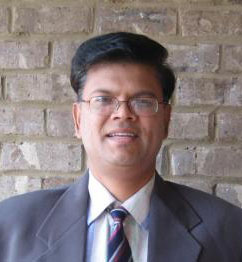LCLUC COVID-19 Webinar Series 2020 features COVID-19 impact studies on LCLUC-related processes
|
|
Mapping Urban Heat Fluxes during the Bay Area COVID-19 Shelter-in-Place Presenter: Christopher Potter, NASA Ames Research Center, California November 18, 2020, 11:00 AM Eastern Standard Time In mid-March 2020, Shelter-in-Place orders were enacted across the San Francisco Bay Area to slow the spread of the worsening COVID-19 pandemic. All but essential businesses were closed, resulting in a 70% reduction in automotive traffic. Cars that would normally be driven and parked in large surface lots or moving between work and home on highway surfaces remained idle. Consequently, fine particulate and ozone pollution concentrations in the Bay Area were 30% lower from March through June when compared to previous years. Scientists at NASA Ames Research Center are using satellite thermal data from the Landsat and ECOSTRESS sensors to investigate related environmental changes in the Bay Area urban landscape since the COVID-19 pandemic began. NASA remote sensing data are showing that decreases in air pollution levels also increased solar radiation fluxes to the ground surface since early 2020. However, having cleaner air and less aerosol pollution over the cities meant that the heat re-emitted during the daytime from dark asphalt and cement surfaces did not stay trapped near the ground as long, cooling the urban environment as it was dissipated relatively rapidly. As a result, all large parking lots, highway corridors, and commercial rooftops were measured at 10-15 degrees Fahrenheit cooler during the March to May period of 2020 compared to previous years.
|
|
|
|
 |
Presenter: Ruth Defries, Columbia University, New York The spread of Covid from cities to vulnerable populations in central India December 18, 2020, 12:00 PM Eastern Standard Time The March 2020 lockdown in India, aimed at controlling the spread of Covid, created a major crisis for rural migrants working in urban areas in India. Migrants lost their daily wages and faced great difficulty in returning to their home villages. Our 2018 survey of 5000 forest-fringe households in central India indicated that about 20% of these households had a migrant in the city. Based on the information about the origin locations of migrants and destination cities, we tested distancing strategies for controlling the spread of covid as migrants returned to villages. A “pod” strategy to reduce contact between villages while maintaining interactions of people within villages is more effective in containing spread than moderate restrictions within and between villages. The impact of Covid on urban migration as a livelihood strategy potentially alters forest use, with possible positive and negative effects for people and forests in central India. |
|
|
Presenter: Jefferson Fox, East-West Center Impacts of Covid on migration, farming, and forests in Thailand and Nepal December 18, 2020, 12:45 PM Eastern Standard Time Farmers in both Thailand and Nepal are highly involved in the global labor market with large portions of the population migrating elsewhere in the country for work or outside of the country. In a June 2020 we conducted a phone survey of 30 Thai farm households that we had previously interviewed in 2019. Among these households only a few migrants had returned home but more than 65 percent of farmers reported problems with purchasing agricultural inputs, such as seeds and fertilizers because of the lack of remittance income. In July 2020, we conducted phone interviews with 60 farmers in two districts in Nepal. Ninety percent migrants from these households had returned home. All households saw significant reductions in remittances as well as declines in their own off-farm income because local work opportunities had dried up. Farmers have found it difficult to buy fertilizer and other agricultural inputs and to take their crops to market. Before the pandemic, surveyed farmers were leaving about 50 percent of their land uncultivated allowing forests to regenerate. Since the COVID-19 crisis, however, they have cleared trees and resumed farming on more than half of this uncultivated land. Webinar Recording |
|
|
|
 |
Presenter: Son Nghiem, NASA Jet Propulsion Laboratory The Dragon Kingdom: COVID-19 or Not and Beyond January 14, 2021, 11:00 AM Eastern Standard Time The on-going COVID-19 pandemic has inflicted profound impacts on people's lives, the economy, and the environment across the world. In particular, emergency lock-down orders were implemented in many cities and regions in various countries with different timings and durations to curb the coronavirus spread. As lock-down isolations drastically reduced traffic, commercial, and industrial activities, a number of research projects have been supported to examine observations of changes such as surface temperature variations from satellite multispectral data, air pollution reduction from satellite products of atmospheric composition, and abnormalities from satellite measurements of nighttime light. Nevertheless, satellite observations of changes have to be carefully interpreted as such changes may not necessarily be a direct consequence of the local lock-down isolation, and may actually be driven by factors far away such as market decisions influenced by commodity pricing. With the above regards, we investigate the case of the dragon fruit or pitaya (Hylocereus undatus in Cactaceae family) agriculture, revolutionized by the discovery of nighttime lighting method to turn dragon fruit into a high-value cash crop, considered as “The Wonderous Fruit” of the 21st Century. A major hot-spot region of pitaya agriculture is Bình Thuận Province in Vietnam, known as the “Dragon Kingdom,” which has been transformed from an unproductive poor arid land to the richest pitaya production region of the world. The science of the pitaya “lighticulture” is founded on the nighttime light supplement that drives the photoconversion process of phytochromes to stimulate flowering on pitaya plants. The “lighticulture” varies strongly with intensive lighting in dark months and no lighting in other seasons. In the peak lighting period, nighttime light from the “Dragon Kingdom” is much more extensive and far brighter than the light from Ho Chi Minh City, the most populous mega city in Vietnam. Using a combination of multi-sourced remote sensing data and various field observations, we will present how the Dragon Kingdom became brighter, rather than dimmer, amid the COVID-19 restriction order when touristic centers were shut down, hotels and resorts were deserted, and urban activities were minimized. From our initial research, we present how the pitaya plantation region is detected and mapped using moderate to very-high resolution satellite data. We discuss how the lighting changes in different seasons and in different years, which are influenced by market fluctuations, and how socioeconomic conditions and trends are altered by the pitaya agriculture transformation. Moreover, we explain how our innovative method to quantitatively monitor population dynamics and population anomaly (both hot and cold spots), serving as virtual ground truth to correctly interpret satellite observations during the COVID-19 pandemic to assess and project its near-term impacts and further beyond in future synthesis research. Webinar Recording |
 |
Presenter: Krishna Vadrevu, NASA Marshall Space Flight Center. Spatial and temporal variations of air pollution over 41 cities of India during the COVID‑19 lockdown period January 14, 2021, 11:45 AM Eastern Standard Time In early 2020, the COVID-19 virus started to spread rapidly across the globe into most countries, including India, where the first case was reported on January 30, 2020. Since then, COVID has resulted in the deaths of ~148439 people till date. To curb the spread of COVID, the Government of India has been following stringent lockdown measures. With the COVID-19 outbreak spreading in more than twelve states, by the third week of March 2020, India's Government invoked the Epidemic Diseases Act, 1897 and government, educational, commercial establishments were shut down, including the suspension of all tourist visas. The most restrictive lockdown phase was from March 25–May 8, 2020 (Phase-1 and 2), wherein the entire country was in a lockdown situation. With the COVID-19 pandemic and a lockdown situation in India, a reduction in air pollution was expected as the main source of pollutants is largely human activities. However, the specific amount of pollution decrease in India is not well-documented, hence this study’s focus. Since cities are hotspots of air pollution, we focused on 41 cities based on their population size. We analyzed how air pollution varied during the lockdown period compared to the previous year and the pre-lockdown period. We specifically used TROPOMI NO2 data and MODIS Aerosol Optical Depth (AOD) over 41 cities to characterize the pollution. Our results suggested a 13% NO2 reduction during the lockdown (March 25–May 3, 2020) compared to the pre‑lockdown (January 1–March 24, 2020) period. Also, a 19% reduction in NO2 was observed during the 2020‑lockdown compared to the same period during 2019. The top cities where NO2 reduction occurred were New Delhi (61.74%), Delhi (60.37%), Bangalore (48.25%), Ahmedabad (46.20%), Nagpur (46.13%), Gandhinagar (45.64) and Mumbai (43.08%) with less reduction in coastal cities. The temporal analysis revealed a progressive decrease in NO2 for all seven cities during the 2020 lockdown period. Results also suggested spatial differences, i.e., as the distance from the city center increased, the NO2 levels decreased exponentially. In contrast, to the decreased NO2 observed for most cities, we observed an increase in NO2 for Northeast India cities during the 2020 lockdown period and attribute it to vegetation fires. The results highlight the impact of the human footprint on India's air pollution levels during COVID-19 as captured by the remote sensing datasets. Webinar Recording |
|
|
|

